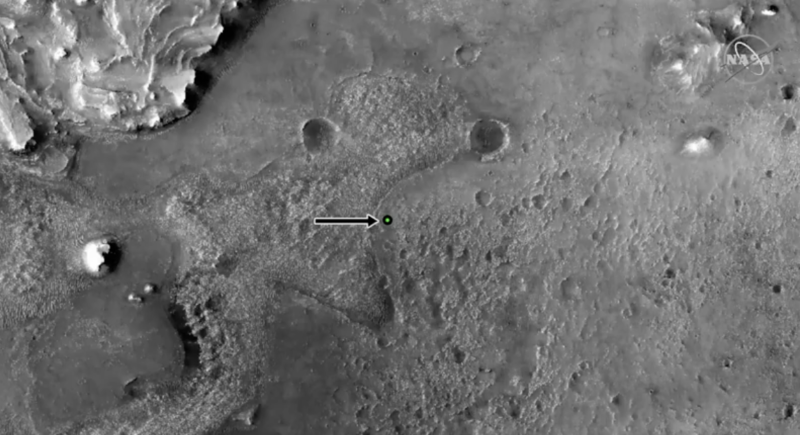
This is where our hero is at the moment.
Representatives of NASA and JPL, immediately after the successful arrival of the rover to Mars, gave a press conference, and then shared additional information - about the future fate of the rover. "Seven minutes of horror" did not frighten anyone (although it made them worry), but now the most interesting part begins - the exploration of the Red Planet.
We know where the rover is located, but we want to see what surrounds it with our own eyes. And soon such an opportunity will present itself. Plus a lot more interesting things.
Where are the proofs, Billy?
We are talking about videos and photos of the landing. The video will be with sound, since the rover is equipped with several microphones at once, unlike previous rovers. Rover filmed a video and took some photos with high-definition cameras, and now this content, quite "heavy", needs to be sent to Earth. The process will take several days, and the Mars satellite Mars Odyssey will be used as a relay. When it is in range of radio visibility, part of the data will be redirected to it, followed by the turn of another orbiter, Mars Trace Gas. The latter will be able to transmit to Earth more data received from the rover. In general, all this is enough for the Earth to receive all the content by Monday .
By the way, the first photographs were taken with cameras, the lenses of which were covered with transparent protective covers. These covers will be removed soon and the pictures will be clearer. It is worth noting that the first photos were taken with low-resolution navigation cameras; heavy artillery did not intervene during landing.
Over the next two days, the directional rover antenna and virtually all other equipment will be deployed and prepared for operation.
As for the location of the rover, it sank to the surface just 1.7 km from the calculated point, which is an almost ideal result. The image below shows the elevation differences in the region where the rover is located. The blue areas are flat terrain that is easy to navigate and ideal for launching a rover. More dangerous regions are marked in yellow. Well, heights are marked in red, which were not worth descending and which should be avoided now so that the rover does not roll over.

The automatic landing and navigation system worked perfectly. Perseverance is safe now. However, scientists are not very happy with the fact that there is a lot of sand and dust in the current region, so the rover is planned to be sent to another location as soon as possible.
Software updates and flights
But this will not happen right now. Ahead are two-day tests and a phased commissioning of all tools. A very important step is downloading the navigation and rover motion control software. Work on this software was carried out during the rover's trip to Mars. Now everything is ready, so all that remains is to transfer the software and load it into the robot.
Once this stage is passed, scientists plan to launch the flying drone, which was mentioned in the news about the landing of "Perseverance". Rover will need to find a seat that meets a number of criteria. After that, the drone will be lowered to the surface, then the rover will drive away from this place, and the mini-helicopter will begin to explore the airspace of the Red Planet. It will take about 10 Martian days to launch. Then - another 30 days to test the capabilities of the drone.
| Parameter | |
|---|---|
| 1,8 | |
| 1,2 | |
| 0,8 | |
| 2400
|
|
| 14 3
|
|
| 220 ( )
|
|
| 1 5 30
|
|
| 300
|
|
| 10
|
|
| : 10 /
: 3 / |
|
| 35—40 ⋅ (130—140 )
|
|
| 2 |
|
The rotorcraft uses counter-rotating coaxial propellers with a diameter of just over 1 meter. It is equipped with a high-resolution camera that will allow you to see everything from the "side" of this drone. A wireless transmitter is also installed inside that will transmit information to the rover. Well, he, in turn, will send all this to Earth. A camera with a solar tracker is used for navigation.

The next stage is the sampling of rocks. The region where the rover landed is of great interest to scientists. First of all, because the region is geologically heterogeneous, there is something to see, roughly speaking.
And then what?
In the long term, Perseverance's goal is to reach what scientists believe to be the delta of an ancient river. It was formed during the "wet period" of the history of Mars. Usually it is in the delta that life is boiling violently (on Earth, of course), so scientists hope to find traces of this life, if, of course, it existed on Mars. The delta is just two kilometers from the rover's current location, so you can get there relatively quickly.
But now, in the short term, scientists and engineers are preparing equipment and deploying the "long-range" antenna of the rover.
Well, we wish them good luck and prompt solution of all current tasks.
